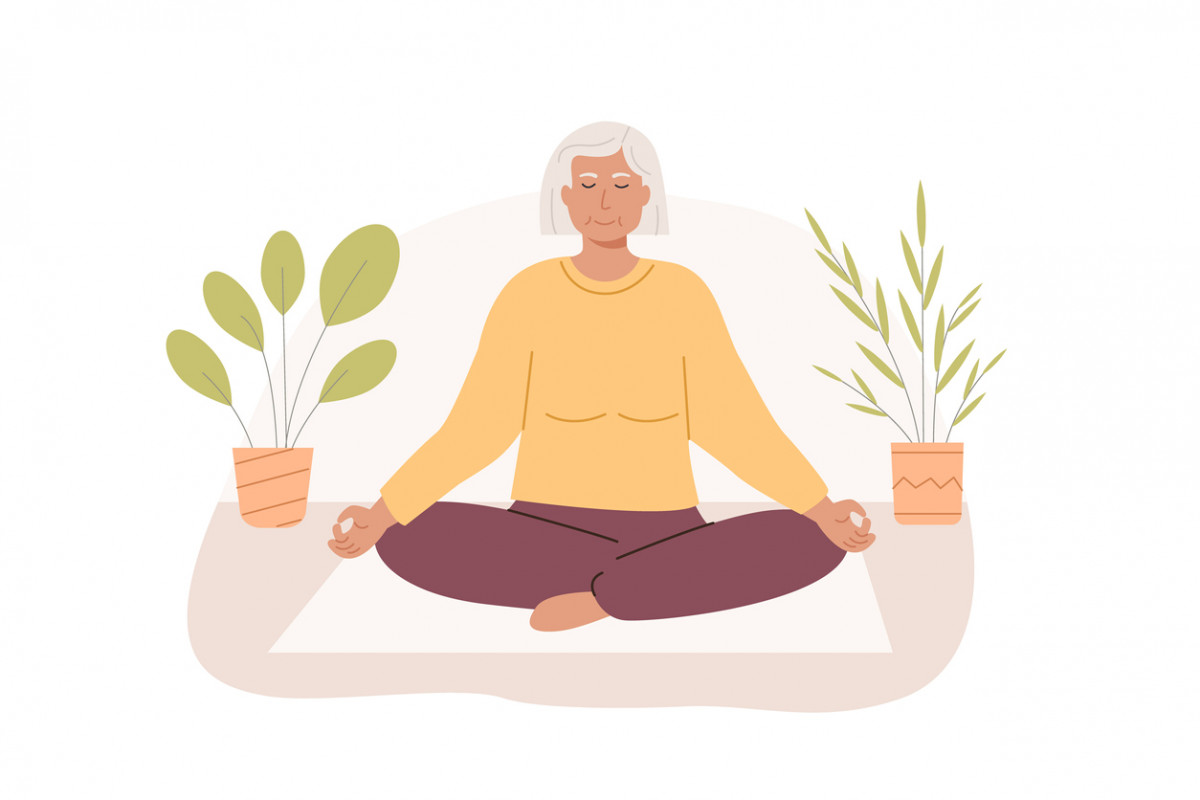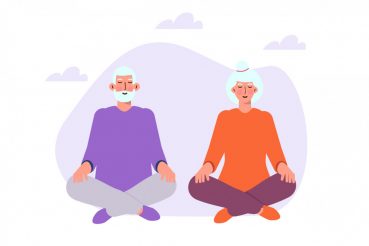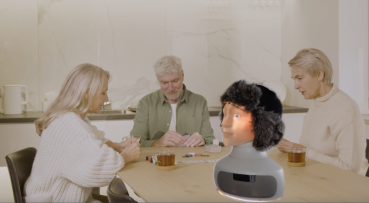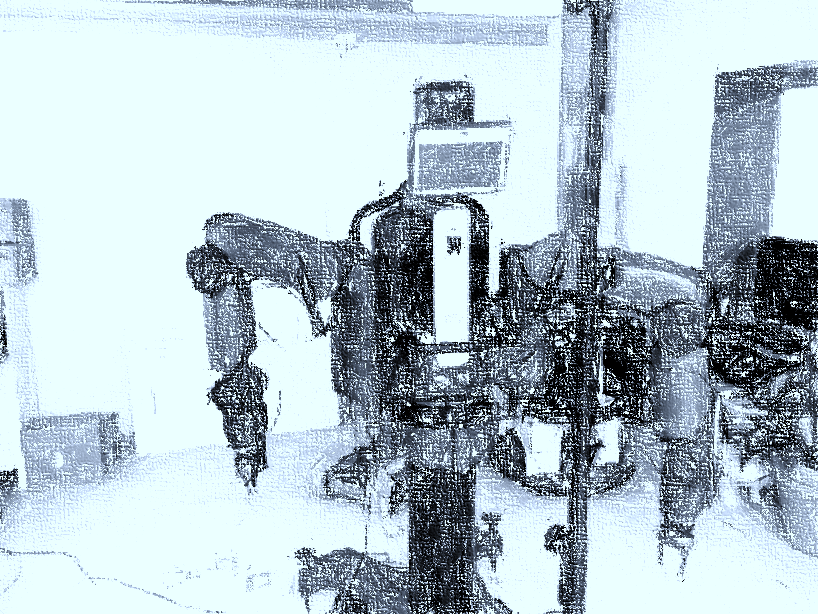Är du 65 år eller äldre? Är du intresserad av mindfulnessträning? Kom och delta i forskning på KTH. Du får testa en mindfulnessapp hemma och dela din erfarenhet av mindfulnessträning med oss!
Mindfulness har blivit en vanlig träningsform för att förbättra välbefinnande, minska symtom på stress och smärta, och förbättra avslappning och koncentration. Detta projekt syftar till att öka kunskapen om fördelarna med mindfulnessträning bland äldre vuxna.
Fördelarna med mindfulness praktik
Regelbunden mindfulnessträning kan hjälpa oss att:
- Minska symptom av stress och ångest
- Hantera våra känslor och tankar
- Hantera kronisk smärta
- Förbättra koncentration och ge ett ökat fokus
- Förbättra vår sömnkvalité och få oss att somna lättare
Vad innebär studien?
Studien kommer att ske under februari och mars 2024:
1. Besök på KTH (2 timmar):
Du kommer att besöka oss på KTH i början av studien så att vi kan presentera mobilapplikationen. Du kommer att få svara på ett frågeformulär om din tidigare användning av mobilapplikationer och ditt upplevda välbefinnande. Mötet kommer att ta cirka 2 timmar, och dagen bestäms efter deltagarnas tillgänglighet.
2. Användning av applikation i ditt hem (3 veckor):
Du kommer att göra en kort daglig mindfulnessträning med mobilapplikationen i ditt eget hem under 3 veckor. Varje daglig praktik tar bara 5-10 minuter. Vi rekommenderar att deltagarna gör mindfulnessträningen minst 4 gånger per vecka, men helst varje dag.
3. Besök på KTH (1 timme):
Efter 3 veckors mindfulnessträningsperiod, kommer du att besöka oss på KTH en gång till. Du kommer att få berätta om dina upplevelser av att använda mobilapplikationen för mindfulnessträning. Detta möte tar cirka 1 timme och datumet bestäms efter deltagarnas tillgänglighet.
Vad är fördelarna med att delta?
Ditt deltagande och din tid bidrar till kunskap om fördelarna med mindfulness praktik för äldre vuxna, och du får möjlighet att påverka framtida utveckling. Samtidigt får du en inblick i den pågående teknikutvecklingen som berör teknik och hälsa. Du kommer även få ett presentkort på en symbolisk summa som tack för ditt deltagande i studien. Deltagandet är helt frivilligt och du kan välja att avbryta ditt deltagande i studien när som helst. Din integritet kommer att respekteras, och ingen person kommer att kunna identifieras utifrån det publicerade materialet. All information om dig är helt och hållet anonymiserad.
Vilka är de vetenskapliga frågeställningarna?
- Påverkar mindfulnessträning för äldre vuxnas välbefinnande? I så fall, på vilket sätt?
- Vilka är fördelarna och utmaningarna med att använda en mobilapplikation för mindfulnessträning bland äldre vuxna?
- Vilken typ av interaktionsmodaliteter (röst, ljud, musik) skulle kunna förbättra applikationens interaktivitet?
Registrering:
För at registrera dig för att delta i studien, fyll gärna i anmälningsformuläret här: Anmälningsformuläret
Du kan också anmäla dig med att skicka dina kontaktuppgifter till mccarren@kth.se.
Alla vuxna från 65 år är välkomna att delta. Du behöver ingen tidigare erfarenhet av mindfulnessträning, men vi rekommenderar att du kan använda en mobilapp på svenska.
Om forskarna:
Lucy McCarren är doktorand på KTH vid skolan för medicinsk teknik och hälsosystem. Hennes forskning fokuserar på sociotekniska studier av artificiell intelligens (AI), i synnerhet de sociala och etiska effekterna av att använda konversations-AI inomäldreomsorgen.
Sanna Kuoppamäki är biträdande universitetslektor på KTH vid skolan för medicinsk teknik och hälsosystem.


 Är du vuxen som är 65 år eller äldre? Är du intresserad av sociala robotar och vill ta del av utvecklingen av en personligt sällskapsrobot? Kom och ta del av denna unika möjlighet att uppleva Furhat, världens mest avancerade sociala robot.
Är du vuxen som är 65 år eller äldre? Är du intresserad av sociala robotar och vill ta del av utvecklingen av en personligt sällskapsrobot? Kom och ta del av denna unika möjlighet att uppleva Furhat, världens mest avancerade sociala robot.

 Well, technologies may fail if they do not correspond to the users’ wishes or desires. So, there is a need for suitable user images, to ensure that millions of investments into robotics and artificial intelligence do not go to waste. Our study speaks to this need. Through developing a better understanding of how users are imagined in practice, we are now beginning to learn how and where we can improve these images; and better tailor them to our needs and expectations.
Well, technologies may fail if they do not correspond to the users’ wishes or desires. So, there is a need for suitable user images, to ensure that millions of investments into robotics and artificial intelligence do not go to waste. Our study speaks to this need. Through developing a better understanding of how users are imagined in practice, we are now beginning to learn how and where we can improve these images; and better tailor them to our needs and expectations.


